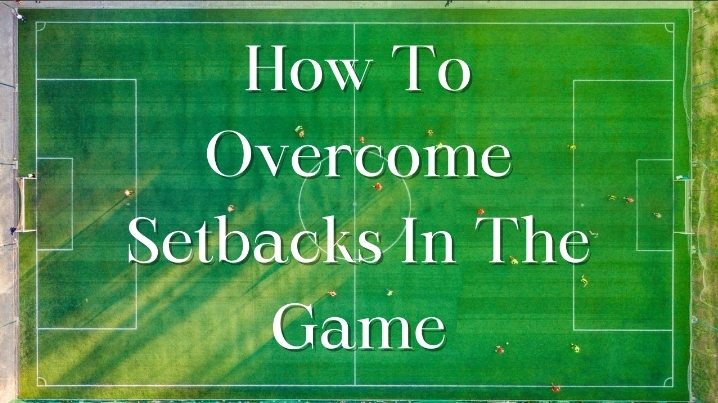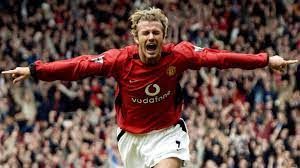Scoring goals is the name of the game in soccer, and strikers bear the biggest responsibility for putting the ball in the back of the net. A striker’s positioning and movements on the field are crucial for finding goal-scoring opportunities. Intelligent runs, being in the right place at the right time, and technical finishing ability are hallmarks of a great striker.
We will cover everything you need to know about successfully playing the striker position. You’ll learn the key striker roles and positions, top tips for your positioning and movements to unlock defenses, and how to hone your shooting technique. With the right knowledge, positioning, clever movements, and practice, you’ll be ready to maximize your goal-scoring contributions for your team!
Common Striker Positions and Their Purpose
Strikers generally take on one of several roles depending on their style of play and the team’s tactics. Here are some of the most common striker positions and their tactical purposes:
Center Forward (Target Man)
Plays centrally and serves as a focal point in attack.
Holds up the ball with back to goal to bring teammates into play.
An outlet for clearances and long passes from the defense.
Flicks ball onto fast runners off shoulders
Second Striker
Supports the main striker, often playing just behind.
Links up play between midfield and center forward.
Intelligent runs exploit gaps left by the center forward.
Wide Forwards
Tasked with stretching defenses by playing high and wide.
Aim to get in behind fullbacks and cross balls into the box
Inverted wingers can cut inside and shoot.
Inside Forwards
Start centrally, but make angled runs into channels.
Cut inside onto a stronger foot to threaten the goal.
Take long shots if defenders back off.
Key Positioning Tips for Strikers
Intelligent positioning is crucial for strikers to constantly threaten the defense and take advantage of any lapses. Here are some key positioning tips:
Stay on the shoulders of the last defender – Keeping defenders occupied creates space for midfielders to advance.
Make angled runs in behind rather than straight – Curved runs beat the offside trap and evade defenders.
Drift into wide areas to stretch defense – This creates gaps centrally for midfielders to exploit.
Attack space behind the defense when they step up – Be ready to sprint in behind the defensive line.
Get in the box for cutbacks and crosses – Be in position for tap-ins from wide areas.
Position yourself at the far post – Attack balls across the goal for simple finishes.
Follow shots for rebounds in the box – Deflections often fall kindly for poachers.
Don’t stray offside when making runs – Time inward runs properly by checking your shoulder.
Communicate with midfielders – Tell them where you want the ball played.
Proper positioning requires reading the game, tactical awareness, and developing a great understanding of your midfielders. Work on your positioning diligently in training.
Important Striker Movements to Master
In addition to intelligent positioning, a striker’s movements are equally important for unlocking defenses. Here are some of the key movements and runs you should practice:
Checking runs: Make a short run back toward the ball to receive a pass to feet. This allows you to turn and attack space.
Diagonal runs: Run across defenders instead of directly at them. This creates passing angles and openings to shoot or cross.
Sprints in behind: Suddenly explosive bursts when the defense steps up can catch them off guard.
Sharp cutbacks: Make hard cuts or turns in the box to fake out defenders and create shooting angles.
Pulling wide: Drag defenders out of position by moving into channels, creating gaps centrally.
Fast interplay: One-two touch passes with midfielders to split defenses.
Near post runs: Get across defenders to divert crosses in with a glancing header.
Curved runs: Avoid going straight at defenders. Approach them at an angle.
Give and go’s: Pass then quickly sprint past the marker demanding a return pass.
Practice these movements in training until they become second nature in matches. Mastering striker runs and movements is an art that creates goals.

Work on Finishing From All Angles
Even with great positioning and movements, a striker needs top-class finishing ability to put the ball in the net. Here are some tips for honing your shooting technique:
Practice volleys, half-volleys, and diving headers to expand your finishing range.
Work on correctly positioning your body and keeping your eye on the ball.
Strike the ball with the proper surface – lace up for power or inside of the foot for placement.
Aim for the corners when shooting from tight angles near the posts.
Blast low shots across the goal when one-on-one with the keeper.
Chip the ball when the keeper goes to the ground too early.
Develop a repertoire of skill moves like stepovers and dragbacks to create shooting opportunities.
In training, have teammates cross balls in from different angles so you can work on finishing first-time shots. Practice shooting after you’ve made various attacking movements to mimic match situations. Strive to become truly ambidextrous and clinical in front of goal.
Build Chemistry With Teammates
Even the most talented striker will struggle alone up front. Building a near-telepathic understanding with your fellow attackers is crucial. Here are some tips:
Learn which passes and runs each midfielder prefers to make. Play to their strengths.
Make runs and make yourself available for return passes. Don’t disappear from the play.
Maintain constant communication. Let midfielders know where you want the ball played.
Develop set play routines from corners and free kicks near the goal.
Celebrate goals together! Share the glory as a unit after combining for a score.
Bond off the pitch to build trust and understanding.
Make selfless runs and passes to bring others into the game.
Never criticize teammates – offer encouragement and stay positive.
By linking up seamlessly with midfielders and fellow forwards, you’ll become a much more dangerous striker. Strive to build chemistry and a sixth sense of where your teammates will be at all times.
Conclusion
In soccer, a striker’s positioning, movements, and finishing ability are vital for scoring goals. Mastering the striker position requires tremendous tactical intelligence, technical skill, and tons of practice.
To excel as a striker, keep these key points in mind:
Know your role – whether it’s center forward, second striker, wide forward, etc. Each position has tactical purposes.
Focus on proper positioning – stay on shoulders, attack space behind defenses, and get in the box.
Practice important movements – checking runs, diagonals, sprints in behind, and sharp cutbacks.
Hone your finishing technique – volleys, placement, chips, blast low shots. Practice from all angles.
Build a great understanding with your midfielders – learn their tendencies and preferences.
With the right positioning, clever movements, clinical finishing, and chemistry with teammates, you’ll be a scoring machine! Work hard to master the art of striking.
Read More: 5 Steps to Becoming a Clinical Finisher in Soccer





